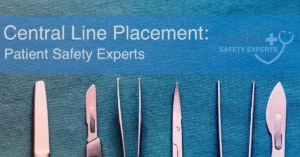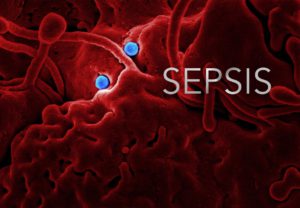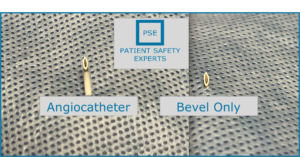Introduction: Numerators vs. Rates in Inpatient Quality Metrics
Inpatient quality metrics are a cornerstone of patient safety and healthcare performance improvement. Traditionally, these metrics are often presented as rates, such as the number of adverse events per 1,000 patient days. But while rates provide context for performance, they don’t always give the full picture. The raw number of safety events—the numerator—should also play a central role in understanding and improving inpatient care. This article will explain why focusing on numerators alongside rates is essential and provide strategies for utilizing numerators in dashboards for ongoing quality improvement.
Why Numerators Matter: Highlighting the True Magnitude of Harm
Magnitude of Harm
When evaluating patient safety, one of the critical insights comes from knowing how many patients are affected by adverse events. The raw count, or numerator, directly illustrates the magnitude of harm. Even if rates (e.g., infections per 1,000 surgeries) appear low, a high numerator can reveal that a considerable number of patients are suffering harm. This can be seen in large institutions, where the number of patients treated is high, and a small rate translates into a large numerator of affected individuals.
Example:
A surgical center performs 20,000 operations annually with a surgical site infection (SSI) rate of 1.5 infections per 1,000 surgeries. The rate may seem low, but the actual number of patients affected is 30 per year. Thirty infections can be significant, especially if they lead to serious complications. Focusing only on the rate could mask the full impact of this safety issue.
Context of Exposure
Rates are usually calculated by dividing the number of events by the number of procedures or patient days, making it easy for large institutions to report low rates due to sheer volume. However, high volume environments may be silently dealing with widespread harm, hidden beneath a low rate. Numerators expose this hidden risk by showing the real number of affected patients.
Overlooking Event Clusters
Numerators can help identify clusters of events that rates might obscure. In high-volume settings, a spike in adverse events can occur without drastically changing the overall rate. Yet, this cluster may indicate systemic issues that need attention. The raw count provides an early warning system for spotting these event clusters, even when rates remain relatively stable.
Psychological Disconnect
Numbers can feel abstract, especially when framed as percentages or rates. However, the psychological impact of seeing the actual number of patients harmed is significant. Healthcare workers may feel less alarmed by a “0.05% event rate” but will be more affected when faced with the reality that “50 patients experienced harm this month.” Keeping a focus on numerators ensures the human cost of patient safety lapses remains central.
“If you want to move people to action, tell them a number they can relate to. Rates are useful for comparisons, but counting people who are harmed hits home.” – Unknown
Opportunity for Improvement
Finally, focusing on numerators can direct efforts toward targeted improvement. While rates might suggest improvement is unnecessary when they seem low, the number of events offers a constant reminder of the need to strive for zero harm. Rates can encourage complacency, whereas the numerator serves as a more direct indicator that there is always room for improvement.
Strategies for Using Numerators in Patient Safety Dashboards
Focusing on numerators doesn’t mean abandoning rates altogether. Instead, the two should work hand-in-hand to create a full picture of patient safety. This section outlines several strategies for effectively integrating numerators into dashboards for patient safety.
1. Use Time Trends
Tracking the cumulative number of safety events over longer periods using control charts provides a broader context than monthly snapshots. Additionally, visualizing zero-event durations helps teams appreciate the lengths of time they’ve sustained zero harm, maintaining momentum in their efforts to prevent future events.
Tip:
Include a time-trend graph that shows days since the last adverse event to motivate continuous improvement and showcase successful streaks.
2. Highlight Close Calls or Near Misses
Even if a unit has no recorded harm events, near misses should be tracked as proactive indicators. Dashboards can include numerators for near-miss events to maintain focus on safety. This ensures that teams remain vigilant and continuously improve processes to prevent harm, even if no patients are currently affected.
3. Include Process Measures
It’s not just about outcomes—process measures that track compliance with safety protocols (like hand hygiene or central line maintenance) can provide insights into the upstream actions that prevent harm. Even when harm numerators are zero, displaying process adherence measures keeps teams focused on prevention.
4. Visualization of Success
Celebrate success with visual indicators such as “zero harm badges” or green checkmarks. This turns a “zero” into a positive motivator and ensures the dashboard remains engaging and relevant, even when harm events are absent.
5. Set Dynamic Goals
For units with zero harm events, complacency can set in. Introducing dynamic goals like reducing response time to near misses or enhancing compliance with safety protocols keeps teams striving for excellence, even in the absence of actual harm.
Example:
A unit with zero infections for six months could aim for 100% hand hygiene compliance or implement a new safety protocol aimed at preventing infections before they occur.
6. Comparative Benchmarking
Provide context by including internal and external benchmarks. Even if a unit reports zero events, comparing performance to other similar units can highlight areas for potential improvement in processes or safety culture. Risk-adjusted metrics that account for patient complexity ensure fair comparisons.
7. Integrate Patient and Staff Feedback
Dashboards should not just rely on hard data. Include qualitative measures, such as safety climate surveys or staff safety suggestions. These can highlight areas of vulnerability and drive improvements in safety culture, even when no harm events have been recorded.
8. Include Predictive Analytics
Incorporate predictive analytics to flag potential risks even when the current numerator is zero. Factors like patient acuity or staffing levels can identify areas at risk of future safety events, allowing teams to address problems before they arise.
Conclusion: A Balanced Approach to Quality Metrics
Using numerators alongside rates for inpatient quality metrics provides a more holistic understanding of patient safety. Numerators highlight the actual number of patients affected, ensuring the human impact remains at the forefront of quality improvement efforts. By integrating strategies like cumulative tracking, near-miss reporting, and process measures into dashboards, healthcare organizations can maintain focus on both prevention and continuous improvement. Even when harm events are zero, numerators play a vital role in identifying hidden risks and ensuring a culture of zero harm.
Key Takeaways:
- Numerators reveal the true scope of harm even in high-volume institutions.
- Event clusters and psychological disconnects are less likely to be overlooked when focusing on numerators.
- Dashboards should include near misses, process metrics, and qualitative feedback to remain valuable even with low or zero harm events.
By balancing both numerators and rates, healthcare organizations can ensure a patient-centered approach to safety and drive targeted improvements that lead to zero harm.












